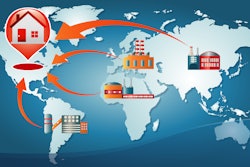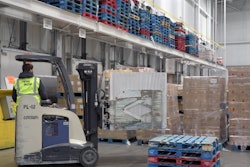
The role that women have played in the supply chain has been long overlooked and unrecognized. Historically, women have been key contributors to the advance and efficiency of supply chains. In ancient Egypt and Rome, women were known to have led trading on land and sea routes, responsible for transporting goods from one place to another. As more complex trading networks evolved throughout Europe and Asia, women continued to be active participants in the manufacture and movement of goods. For North America, it would take a bit longer for women to be seen as integral to the supply chain.
The history of women in the U.S. supply chain can be traced back to the 1900’s when women began entering the workforce in large numbers in World War II. Prior to this, a mere 20% of women held positions outside of their homes. As men were drafted into the military, women played a critical role back in their hometowns as they took on jobs in manufacturing, logistics, and transportation. Despite their hard work and exceptional results in their respective fields, they were still traditionally compensated less than men in the same positions and were limited to lower-level jobs.
Though they were subject to these inequalities, the supply chain boom ramped up with women who refused to let anyone hold them back. As the war ended, many assumed that the workforce would return to its ‘former glory’, but some companies realized the value they found and continued to normalize the presence of women, particularly in the fields of logistics and trucking. But there remained many barriers to overcome.
Traditionally, most supply chain roles required a formal education in a technical field such as engineering, an apprenticeship, and likely multiple geographic moves as the individual moved up the ranks. Fast forward to the past 15 years or so, employers are now recognizing the value of broader fields of education and experience, opening supply chain opportunities to a new set of candidates. Employers are demanding skills such as collaboration, multi-tasking, mentoring, and communication – qualities that many strong female executives naturally possess.
In my twenty-five years recruiting senior-level supply chain executives, I have been thrilled to witness more and more talented female executives move into top supply chain roles. These trailblazers are visible role models for younger generations to envision themselves progress in the supply chain. They are also fantastic reminders to the greater business world that diversity of thought and approach has a positive impact on the company’s direction and results. While this increase is a wonderful shift toward the future, there’s more to accomplish.
There is no time to waste in reaping the benefits of a diversified workforce. It is crucial to remember that the talent brought forward by recruiters must be qualified thought leaders that drive change and advancement in supply chain management. I am grateful to be involved in placing many of these women in supply chain leadership positions because of their impressive qualifications and remarkable understanding of how they can better the field.
What’s Next for Women in Supply Chain?
McKinsey and Company’s 2020 report, “Diversity Wins: How Inclusion Matters,” gives fantastic insight into the ways that creating a diverse workforce positively changes the very fabric of a business by stating, “Companies with more than 30% women executives were more likely to outperform companies where this percentage ranged from 10% to 30%, and in turn, these companies were more likely to outperform those with even fewer women executives or none at all. A substantial differential likelihood of outperformance—48%—separates the most from the least gender-diverse companies.”
Bringing in individuals with unique perspectives for management roles is the only way of progressing and furthering our productivity. For hundreds of years, society told women that they would not be valued in these lines of work, but they never heard the word no. They kept pushing forward and trying again until they made their voices heard, and that’s what has propelled us to be successful today.
The pool of candidates in supply chain functions has become more diversified today than it was 10 years ago, with women of all backgrounds increasing in representation. With the inclusion of a diverse pool, the appointment of diverse executives will increase. This is a trend that allows the younger generation to see professionals that look like them in more influential roles and encourages them to explore careers in these functions. This creates an ongoing funnel of exciting new talent to rise through the ranks. As we continue onward, I am confident we will see more women rising into top supply chain roles and giving proof to what I’ve known for many years: women in the supply chain are unstoppable!




















